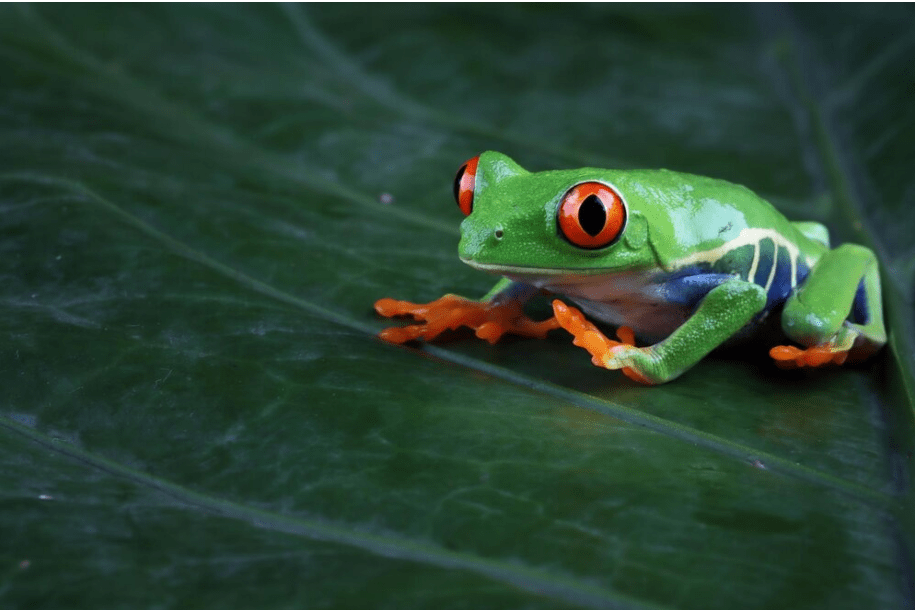
The Ultimate Guide to Caring for Red Eyed Green Tree Frogs
Red-eyed green tree frogs are fascinating and unique amphibians that require specific care to thrive in a home environment. In this ultimate guide, we will cover everything you need to know about caring for these colorful creatures, including their habitat, diet, and general well-being. Whether you’re a beginner frog owner or an experienced amphibian enthusiast, this guide will provide valuable information on creating the best environment for red-eyed green tree frogs in your home.
First and foremost, it’s important to set up the proper habitat for your red-eyed green tree frog. This includes a spacious, well-ventilated enclosure with plenty of plants, branches, and hiding spots. The temperature and humidity levels should be carefully monitored and maintained to mimic their natural rainforest environment.
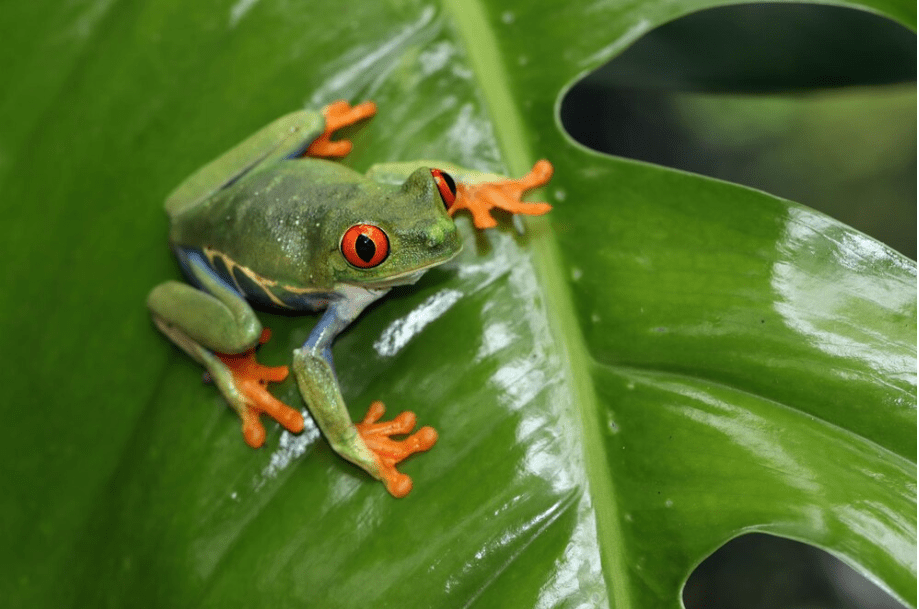
In terms of diet, red-eyed green tree frogs are primarily insectivores and should be fed a varied diet of live insects such as crickets, mealworms, and waxworms. It’s important to dust their food with a calcium and vitamin supplement to ensure they receive all the necessary nutrients.
Additionally, regular maintenance of their enclosure is crucial. This includes cleaning and disinfecting the enclosure, removing waste and uneaten food, and providing fresh, dechlorinated water.
Lastly, it’s important to monitor your red-eyed green tree frog’s behavior and physical appearance for any signs of illness or stress. If you notice any changes, it’s important to seek veterinary care from a qualified amphibian veterinarian.
By following the guidelines provided in this ultimate guide, you can ensure that your red-eyed green tree frog thrives in a healthy and enriching environment. Remember, proper care and attention are essential for the well-being of these unique and fascinating creatures.
Table of Contents
ToggleUnderstanding the Red Eyed Green Tree Frog
The red-eyed green tree frog is primarily an insectivore and should be given a varied diet of live insects such as crickets, mealworms, and waxworms. It’s important to dust their food with a calcium and vitamin supplement to ensure they receive all the necessary nutrients.
Regular maintenance of their enclosure is also crucial, including cleaning and disinfecting the enclosure, removing waste and uneaten food, and providing fresh, dechlorinated water. Monitoring your frog’s behavior and physical appearance for any signs of illness or stress is also important. If you notice any changes, seek veterinary care from a qualified amphibian veterinarian. Proper care and attention are essential for the well-being of these unique and fascinating creatures.
Additionally, providing environmental enrichment in the form of live plants, climbing branches, and hiding spots can help to create a more natural and stimulating environment for your frog. It’s also important to maintain proper temperature and humidity levels in their enclosure to mimic their natural habitat. By following these guidelines, you can ensure that your red-eyed green tree frog thrives in a healthy and enriching environment.
Setting Up the Perfect Habitat
When setting up a habitat for a red-eyed green tree frog, it’s important to replicate their natural environment as closely as possible. This means providing a spacious enclosure with live plants, climbing branches, and hiding spots to create a stimulating and enriching environment for your frog. It’s also crucial to maintain proper temperature and humidity levels, as these frogs thrive in warm and humid conditions.
Regular maintenance of the enclosure is essential, including cleaning and disinfecting the enclosure, removing waste and uneaten food, and providing fresh, dechlorinated water. Additionally, monitoring your frog’s behavior and physical appearance for any signs of illness or stress is important. If you notice any changes, seek veterinary care from a qualified amphibian veterinarian.
By providing the proper care and attention, you can ensure that your red-eyed green tree frog thrives in a healthy and enriching environment.
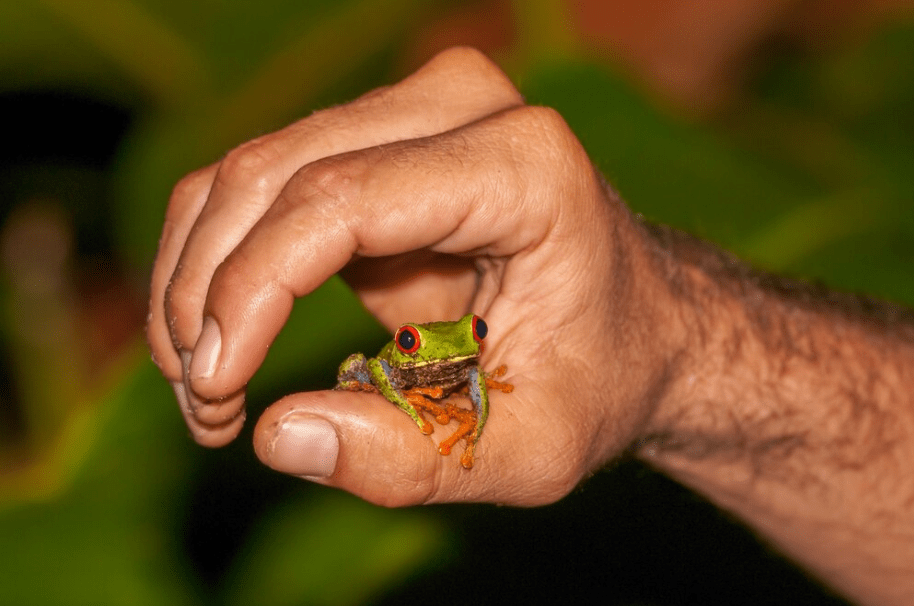
Overall, it’s important to create a habitat for your red-eyed green tree frog that closely mimics their natural environment. This includes providing a spacious enclosure with live plants, climbing branches, and hiding spots. It’s also crucial to maintain proper temperature and humidity levels in their enclosure, as these frogs thrive in warm and humid conditions.
Regular maintenance, including cleaning and disinfecting the enclosure, removing waste and uneaten food, and providing fresh, dechlorinated water is essential.
Additionally, monitoring your frog’s behavior and physical appearance for any signs of illness or stress is important. If you notice any changes, seek veterinary care from a qualified amphibian veterinarian. By following these guidelines, you can ensure that your red-eyed green tree frog thrives in a healthy and enriching environment.
Feeding and Nutrition
Feeding and nutrition are crucial aspects of caring for your red-eyed green tree frog. These amphibians primarily feed on live insects such as crickets, fruit flies, and small worms. It’s important to provide a varied diet to ensure that your frog receives all the necessary nutrients for optimal health.
Gut-loading the insects with nutritious foods and dusting them with vitamin and mineral supplements before feeding them to your frog can also contribute to their overall well-being.
It’s important to monitor your frog’s feeding behavior and adjust their diet as needed. Additionally, providing access to clean, dechlorinated water for drinking and soaking is essential for maintaining proper hydration. By providing the proper care and attention, you can ensure that your red-eyed green tree frog thrives in a healthy and enriching environment.
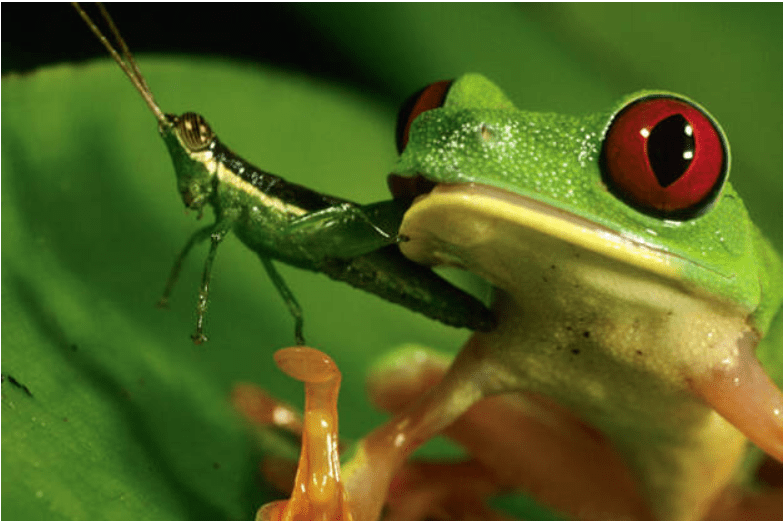
Housing and Environment
Creating a suitable habitat for your red-eyed green tree frog is essential for their well-being. A terrarium with ample space for climbing, hiding, and exercise is ideal. Ensure the enclosure has a secure lid to prevent escape and maintain a stable temperature and humidity level. A temperature range of 75-85°F (24-29°C) and a humidity level of 60-80% is recommended.
Use live plants and natural substrate to create a naturalistic environment, and provide proper lighting and UVB exposure to support their health. Regularly clean and maintain the enclosure to prevent the buildup of bacteria and mold. By following these guidelines, you can ensure that your red-eyed green tree frog thrives in a healthy and enriching environment.
Health and Wellness
Regularly monitor your red-eyed green tree frog for any signs of illness or changes in behavior. Common health issues in amphibians include skin infections, metabolic bone disease, and parasitic infestations. If you notice any changes, such as loss of appetite, lethargy, or unusual skin discoloration, seek veterinary care from a qualified amphibian veterinarian.
Regular check-ups and proper hygiene can also help prevent potential health issues. By following these guidelines, you can ensure that your red-eyed green tree frog thrives in a healthy and enriching environment.
Additionally, it’s important to provide a varied diet consisting of live insects such as crickets, flies, and moths, as well as occasional small vertebrates like pinkie mice. Provide a shallow water dish for drinking and soaking, and mist the enclosure regularly to maintain proper humidity levels.
It’s also important to monitor their behavior and health closely, and seek veterinary care if any issues arise. By providing the proper care and attention, you can ensure that your red-eyed green tree frog thrives and lives a happy, healthy life.
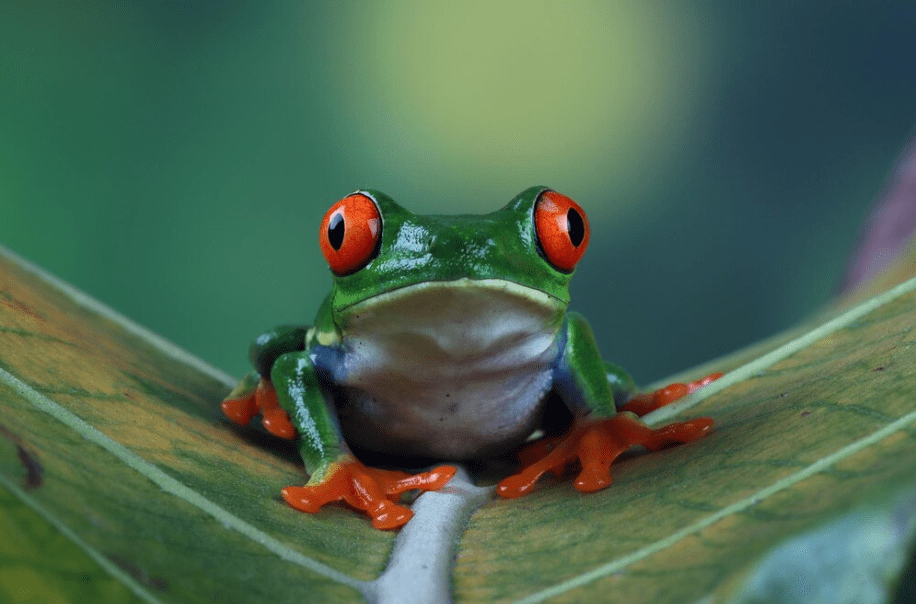
Maintaining the Health and Well-being of Your Frog
To maintain the health and well-being of your red-eyed green tree frog, it’s important to regularly monitor for any signs of illness or changes in behavior. This can include loss of appetite, lethargy, or unusual skin discoloration. If you notice anything concerning, seek veterinary care from a qualified amphibian veterinarian.
Additionally, providing a varied diet of live insects and occasional small vertebrates, a shallow water dish for drinking and soaking, and regular misting of the enclosure to maintain proper humidity levels is essential. By providing the proper care and attention, you can ensure that your red-eyed green tree frog thrives in a healthy and enriching environment.
It’s important to provide a suitable enclosure with plenty of plants and hiding spots, as well as maintaining proper temperature and humidity levels. This can help reduce stress and ensure a comfortable living environment for your frog. Regularly clean and sanitize the enclosure to prevent the buildup of bacteria and parasites. By following these guidelines, you can help your red-eyed green tree frog thrive and live a happy, healthy life.
Handling and Interaction
When handling your red-eyed green tree frog, it’s important to do so gently and minimally to avoid causing stress. Wash your hands before and after handling to prevent the spread of any potential bacteria or parasites.
Remember that these frogs are delicate creatures and may not enjoy being handled as much as some other pets. It’s best to observe them in their enclosure and provide enrichment through a varied diet, proper habitat, and enrichment activities. By respecting their natural behaviors and needs, you can ensure that your frog continues to live a happy and healthy life.
Diet and Nutrition
Red-eyed green tree frogs are insectivores, so it’s important to provide a varied diet of live insects such as crickets, fruit flies, and small mealworms. Gut-loading the insects with nutrient-rich foods and dusting them with calcium and vitamin supplements can help ensure your frog receives the proper nutrition.
It’s important to feed them appropriately sized prey items to prevent choking or gastrointestinal issues. Providing a shallow dish of clean, dechlorinated water for drinking and soaking can also help maintain their overall health.
Overall, by providing a suitable habitat, respectful handling, and a varied, nutritious diet, you can help ensure that your red-eyed green tree frog thrives in a healthy and enriching environment.
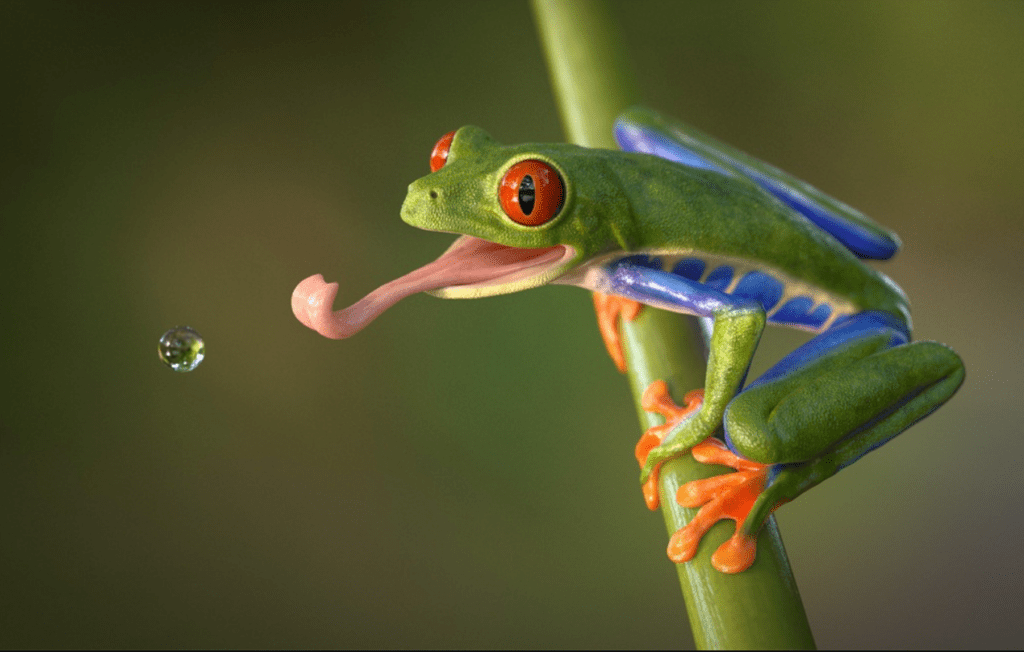
Common Health Issues and How to Address Them
Some common health issues for red-eyed green tree frogs include skin infections, parasites, and metabolic bone disease. It’s important to monitor your frog for any changes in behavior, appetite, or appearance and seek veterinary care if you notice any concerns. Ensuring a clean and well-maintained environment, providing proper nutrition, and regular monitoring can help prevent these health issues.
Additionally, it’s important to handle your frog minimally and with care to avoid causing stress or injury. By providing a suitable habitat, respecting their natural behaviors, and addressing any health concerns promptly, you can help ensure a long and healthy life for your red-eyed green tree frog.
Overall, it’s crucial to be mindful of potential health issues and take preventative measures to ensure the well-being of your red-eyed green tree frog. By maintaining a clean habitat, providing a balanced diet, and minimizing stress through respectful handling, you can help promote a healthy and enriching environment for your frog.
Additionally, regular monitoring and prompt veterinary care for any concerning changes in behavior or appearance can help address potential health issues effectively. With proper care and attention, you can help ensure that your red-eyed green tree frog thrives in a healthy and happy environment.
Creating a Safe and Stimulating Environment for Your Frog
Creating a safe and stimulating environment for your red-eyed green tree frog is essential for their overall well-being. This includes maintaining a clean habitat, providing proper nutrition, and minimizing stress through respectful handling.
It’s important to ensure that the temperature, humidity, and lighting in their habitat are suitable for their needs. Additionally, providing hiding spots and climbing materials can help stimulate their natural behaviors and promote their mental and physical health. By creating a safe and enriching environment for your frog, you can help them thrive and lead a happy and healthy life.
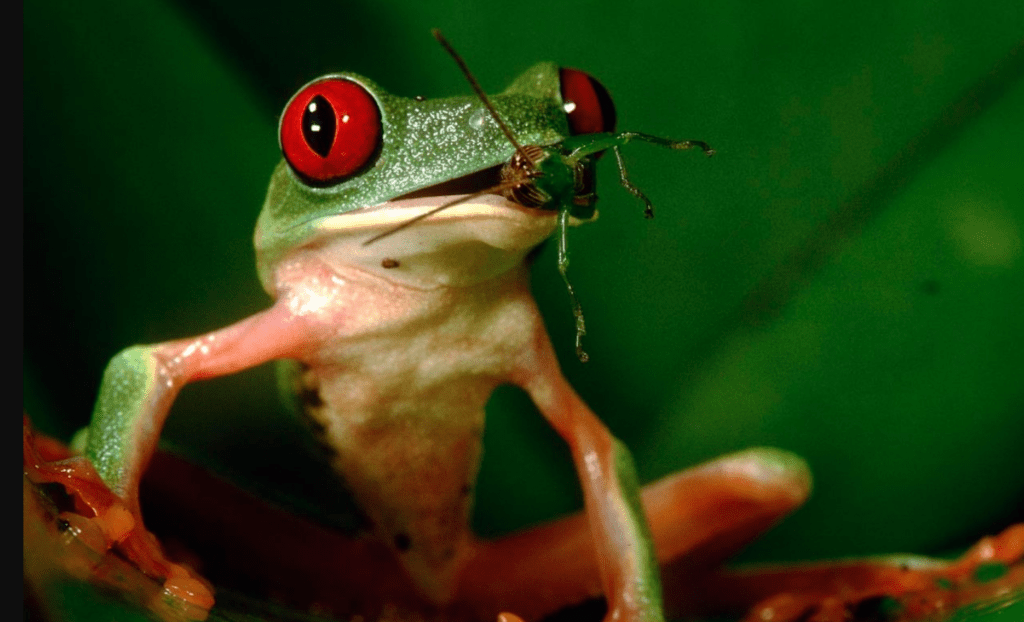
Respecting Natural Behaviors
Respecting the natural behaviors of your red-eyed green tree frog is important for their well-being. This includes providing suitable hiding spots, climbing materials, and other environmental enrichment to allow them to exhibit their natural behaviors. Additionally, it’s important to minimize stress through respectful handling and provide opportunities for regular exercise and mental stimulation. By respecting their natural behaviors, you can help your frog lead a fulfilling and healthy life.
Addressing Health Concerns Promptly
Addressing any health concerns promptly is crucial for ensuring the long-term health of your red-eyed green tree frog. This includes monitoring their behavior and appearance for any signs of illness or distress and seeking veterinary care as soon as any concerns arise. By addressing health concerns promptly, you can help prevent any potential issues from escalating and ensure that your frog receives the care they need to stay healthy and happy.
In conclusion, caring for red-eyed green tree frogs requires attention to detail and a commitment to creating the best possible environment for them. It’s important to research and understand their specific needs, including their habitat, diet, and overall well-being. By providing the right care and environment, you can ensure that your red-eyed green tree frogs thrive in your home. Remember to always prioritize their health and well-being above all else.
Frequently Asked Questions (FAQ)
Red Eyed Green Tree Frogs are striking amphibians known for their vivid green bodies and bright red eyes. They are popular in the pet trade and are native to Central America.
Common health issues include skin infections, respiratory problems, and nutrient deficiencies. Regular monitoring and maintaining a clean, well-regulated environment can help prevent these issues.
These frogs inhabit tropical rainforests in Central America, from southern Mexico to northern Colombia. They thrive in humid environments with plenty of foliage.
They primarily eat insects such as crickets, flies, and moths. In captivity, they can be fed a diet of gut-loaded crickets and other insects.
Adult frogs typically reach 2 to 3 inches in length, with females generally being larger than males.
In captivity, they require a terrarium with high humidity, plenty of climbing space, and a substrate that retains moisture. Live plants and branches are ideal for creating a naturalistic environment.
They can be suitable for beginners who are committed to providing the proper care. Their specific humidity and temperature needs must be consistently met.
Use a misting system or spray the enclosure daily to maintain humidity levels between 70-90%. A hygrometer can help monitor these levels accurately.
While they mainly eat insects, it’s important to provide a varied diet and occasionally dust their food with calcium and vitamin supplements to ensure proper nutrition.
